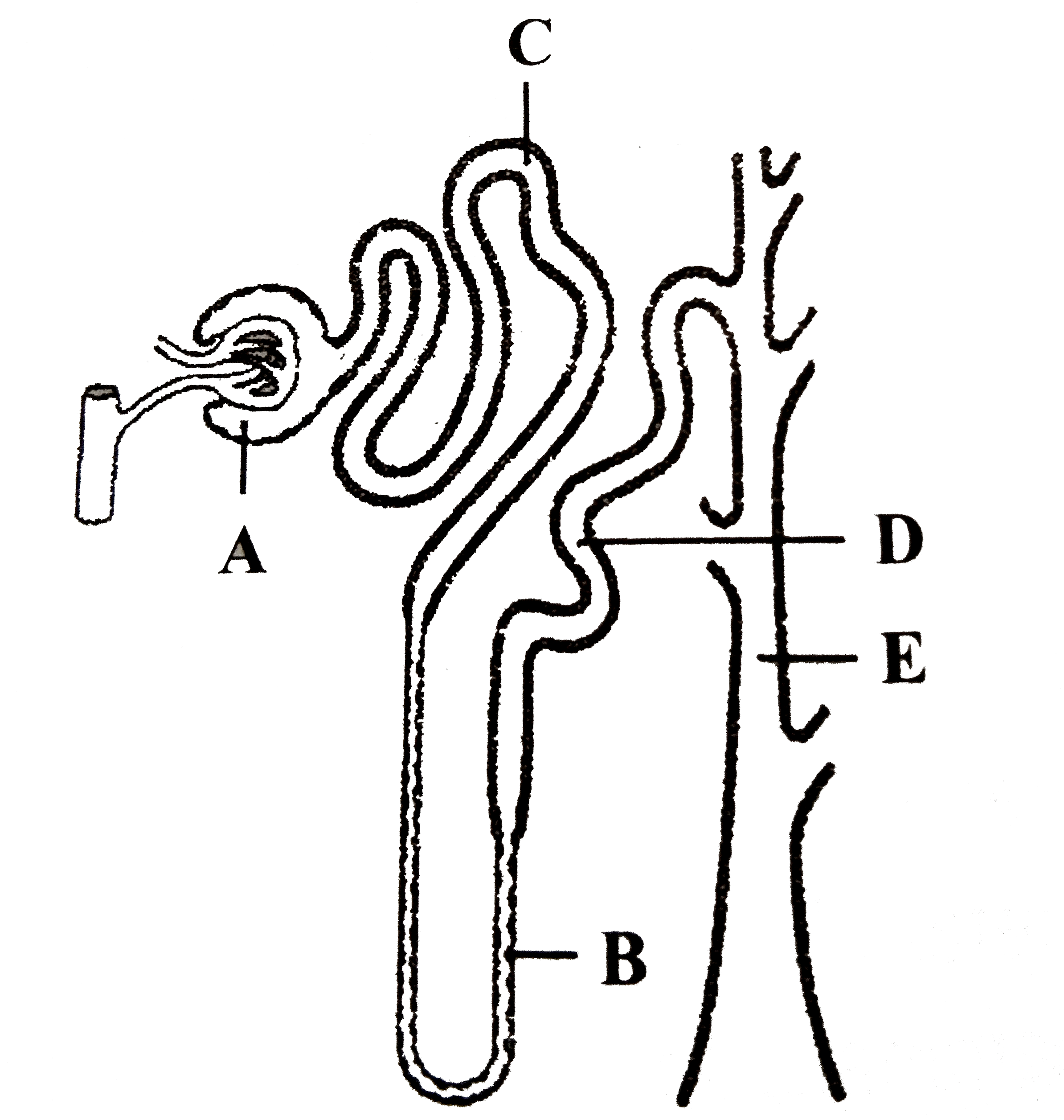Identify the types of epithelial tissue from the given statements and select the correct option regarding them.
I. L forms delicate lining of blood vessels.
II. M is found in salivary and sweat glands.
III. N forms lining of stomach and gall bladder.
IV. O lines Fallopian tubes and nephrons of kidney.
I could be cuboidal epithelium whereas M could be columnar epithelium.
M could be cuboidal epithelium whereas N could be columnar epithelium.
N could be squamous epithelium whereas O could be cuboidal epithelium.
I could be columnar epithelium whereas O could be ciliated epithelium.
The correct Answer is:B
Topper's Solved these Questions
- NSO QUESTION PAPER 2018 SET B BOOK - SCIENCE OLYMPIAD FOUNDATION CHAPTER - NSO QUESTION PAPER 2018 SET B EXERCISE - ACHIEVERS SECTION
4 Videos
- NSO QUESTION PAPER 2018 SET ABOOK - SCIENCE OLYMPIAD FOUNDATION CHAPTER - NSO QUESTION PAPER 2018 SET AEXERCISE - ACHIEVERS SECTION
4 Videos
- NSO QUESTION PAPER 2019 SET ABOOK - SCIENCE OLYMPIAD FOUNDATION CHAPTER - NSO QUESTION PAPER 2019 SET AEXERCISE - ACHIEVERS SECTION
2 Videos
Similar Questions
Name the kind of epithelium which forms the inner lining of:
(i) Blood vessels (ii) Fallopian tube. Mention one difference between the two.
View SolutionRead the statements given below and identify the correct option.
(i) A parallelogram has only one line of symmetry.
(ii) A square and a rectangle have the same number of lines of symmetry.
(iii) The diameter of a circle is its line of symmetry.

View Solution
Knowledge Check
Which type of epithelial tissue forms the lining of kidney tubules and ducts of salivary glands, where it provides mechanical support?
ASimple squamous epithelialBStratified squamous epithelialCCiliated columnar epithelialDCuboidal epithelialPick the odd one in each series and select the correct option
(i) Areolar tissue, blood, neuron, tendon
(ii) Salivary gland, gastric gland, tear gland, thyroid gland
(iii) Adrenal gland, sweat gland, milk gland, oil glandA (i) (ii) (iii)Areolar tissue Gastric gland Milk glandB (i) (ii) (iii)Blood Tear gland Oil glandC (i) (ii) (iii)Tendon Salivary gland Sweat glandD (i) (ii) (iii)Neuron Thyroid gland Adrenal gland
The given figure represents a single nephron from a mammalian kidney. Identify the labelled parts, match them with the functions (i-iv) and select the correct option.
(i). The site of ultrafiltration.
(ii). Particularly sensitive to ADH.
(iii). The main site for the reabsorption of glucose and amino acids.
(iv). Largely responsible for the maintenance of blood pH.Aa) (i)-A,(ii),E,(iii)-C,(iv)-DBb) (i)-A,(ii)-B,(iii)-C,(iv)-DCc) (i)-B,(ii)-A,(iii)-C,(iv)-EDd) (i)-E,(ii)-B,(iii)-D,(iv)-A
Read the following statements about animal tissue . Identify the true and false ones and select the correct option .
I. Adhering junctions along with cementing cell together facilitate the cells to communicate with each other by connecting the plasma
II. Compound epithelium covers the moist surface of the buccal cavity. Pharynx and lining of ducts of salivary glands.
III. The striated muscle fibre is a thin elongated with point ends and multiple nuclei
IV . Cartilage is present in the tip of the nose and between the bodies of adjacent vertebrae.
View Solution
The given figure represents a single nephron from a mammalian kidney. Identify the labelled parts, match them with the functions (i-iv) and select the correct option.
(i). The site of ultrafiltration.
(ii). Particularly sensitive to ADH.
(iii). The main site for the reabsorption of glucose and amino acids.
(iv). Largely responsible for the maintenance of blood pH.
View SolutionRead the following statements about animal tissue . Identify the true and false ones and select the correct option .
I. Adhering junctions along with cementing cell together facilitate the cells to communicate with each other by connecting the plasma
II. Compound epithelium covers the moist surface of the buccal cavity. Pharynx and lining of ducts of salivary glands.
III. The striated muscle fibre is a thin elongated with point ends and multiple nuclei
IV . Cartilage is present in the tip of the nose and between the bodies of adjacent vertebrae.
View SolutionIdentify the correct statements from those given below.
I. Digestion of starch initiates in the stomach.
II. Tongue helps in mixing of saliva with food.
III. Liver, smallest organ of our body secretes bile.
IV. The ruminants can digest raw grass due to the presence of cellulase enzyme in their digestive tract.
The correct options are
View SolutionIdentify the correct statements from those given below.
I. Digestion of starch initiates in the stomach.
II. Tongue helps in mixing of saliva with food.
III. Liver, smallest organ of our body secretes bile.
Iv. The ruminants can digest raw grass due to the presence of cellulase enzyme in their digestive tract.
The correct options are
View Solution
